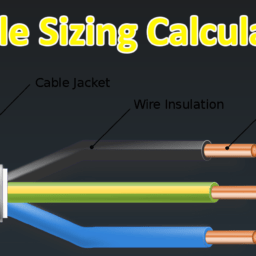Calculating Electrical Load Capacity
Understanding capacity and load becomes necessary if you are planning the electrical service for a new home, or if you are considering an electrical service upgrade to an older home. Understanding the load needs will let you choose an electrical service with an appropriate capacity. In older homes, it’s extremely common for the existing service to be badly undersized for the needs of all the modern appliances and features now in use.
What Is Electrical Load Capacity?
The term “electrical load capacity”refers to the total amount of power provided by the main source of electricity for use by your home’s branch circuits and the lights, outlets, and appliances connected to them.
Total electrical capacity of an electrical service is measured in amperage (amps). In very old homes with knob-and-tube wiring and screw-in fuses, you may find the original electrical service delivers 30 amps. Slightly newer homes (built before 1960) may have 60-amp service. In many homes built after 1960 (or upgraded older homes), 100 amps is the standard service size. But in large, newer homes, 200-amp service is now as a minimum, and at the very top end, you may see 400-amp electrical service installed.
How do you know if your current electrical service is adequate, or how do you plan for new electrical service? Determining this requires a little math to compare total available capacity against the likely load that will be placed on that capacity.
Understanding Electrical Capacity
Calculating how much power your home needs is a matter of calculating the amperage load of all the various appliances and fixtures, then building in a margin of safety. Generally, it’s recommended that the load never exceeds 80 percent of the electrical service’s capacity.
To use the math, you need to understand the relationship between watts, volts, and amps. These three common electrical terms have a mathematical relationship that can be expressed in a couple of different ways:
- Volts x Amps = Watts
- Amps = Watts/Volts
These formulas can be used to calculate the capacity and loads of individual circuits, as well as for the entire electrical service. For example, a 20-amp, 120-volt branch circuit has a total capacity of 2,400 watts (20 amps x 120 volts). Since the standard recommendation is for the load to total no more than 80 percent of the capacity, this means that the 20-amp circuit has a realistic capacity of 1920 watts. So to avoid the danger of circuit overloads, all the light fixtures and plug-in appliances together on this circuit should consume no more than 1,920 watts of power.
It is fairly easy to read the wattage ratings of the lightbulbs, television sets, and other appliances on the circuit to determine if a circuit is likely to overload. For example, if you routinely plug a 1500-watt space heater into a circuit, and run several light fixtures or lamps with 100-watt bulbs on the same circuit, you have already used up most of the safe 1920-watt capacity.
The same formula can be used to determine the capacity of the house’s overall electrical service. Because a home’s main service is 240 volts, the math looks like this:
- 240 volts x 100 amps = 24,000 watts
- 80 percent of 24,000 watts = 19,200 watts
In other words, a 100-amp electrical service should be expected to provide no more than 19,200 watts of power load at any given time.
Calculating Load
After you know the capacity of individual circuits and of the home’s full electrical service, you can then compare this with the load, which you can calculate simply by adding up the wattage ratings of all the various fixtures and appliances that will be drawing power at the same time.
You might think this involves adding up the wattage of all the light fixture lightbulbs, all the plug-in appliances, and all the hard-wired appliances, and then comparing this to the total capacity. But it is rare for all electrical appliances and fixtures to run at the same time—you wouldn’t run the furnace and the air conditioner at the same time, for example; nor is it be likely that you would be vacuuming while the toaster is running. For this reason, electricians generally have alternative methods for determining the appropriate size for the electrical service. Here is one method that is sometimes used:
- Add together the wattage capacity of all general lighting branch circuits.
- Add in the wattage rating of all plug-in outlet circuits.
- Add in the wattage rating of all permanent appliances (ranges, dryers, water heaters, etc.)
- Subtract 10,000.
- Multiply this number by .40
- Add 10,000.
- Look for the full wattage rating of permanent air conditioners, and the wattage rating heating appliances (furnace plus space heaters), then add in whichever is the larger of these two numbers. (You don’t heat and cool at the same time, so don’t need to add both numbers.)
- Divide the total by 240.
This resulting number gives the suggested amperage needed to power the home adequately. You can easily evaluate your current electrical service by using this formula.
Other electricians suggest another simple rule-of-thumb:
- 100-amp service is generally large enough to power a small- to moderate-sized home’s general branch circuits, plus one or two electric appliances, such as a range, water heater, or clothes dryer. This service may be sufficient for a home under 2,500 square feet if the heating appliances run on gas.
- 200-amp service will handle the same load as 100-amp service, plus electric appliances and electric heating/cooling equipment in homes up to about 3,000 square feet in size.
- 300- or 400-amp service is recommended for large homes (more than 3,500 square feet) with all-electric appliances and electric heating/cooling equipment. This service size is recommended where the expected electric heat load is over 20,000 watts. A 300- or 400-amp service is usually provided by installing two service panels—one providing 200 amps and a second providing another 100 or 200 amps.
Plan for the Future
It is generally a good idea to oversize an electrical service to make future expansion possible. In the same way that 100-amp service quickly became undersized when electric appliances become common, today’s 200-amp service may someday seem badly undersized when you find yourself recharging two or three electric cars. An oversized electrical service will also make it possible to run a sub-panel out to your garage or shed if you someday choose to take up woodworking, welding, pottery, or another hobby requiring lots of power.
[ddev-power-calculator]


